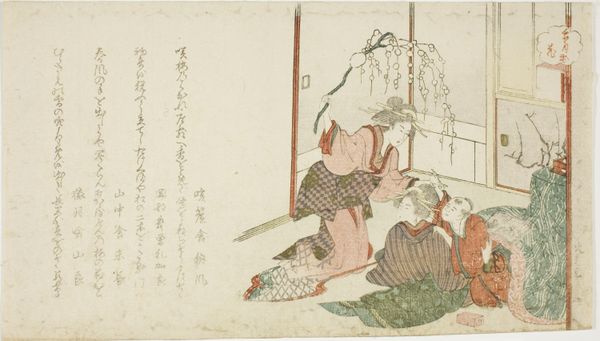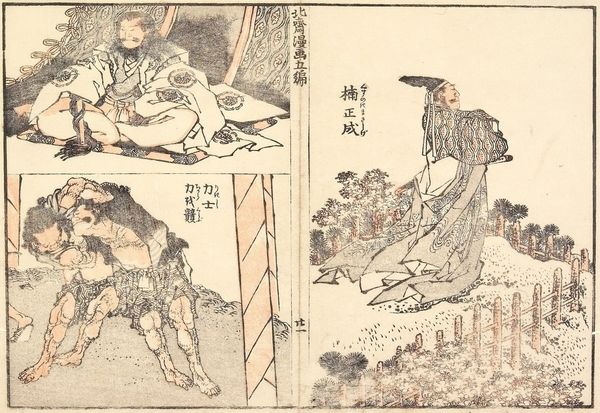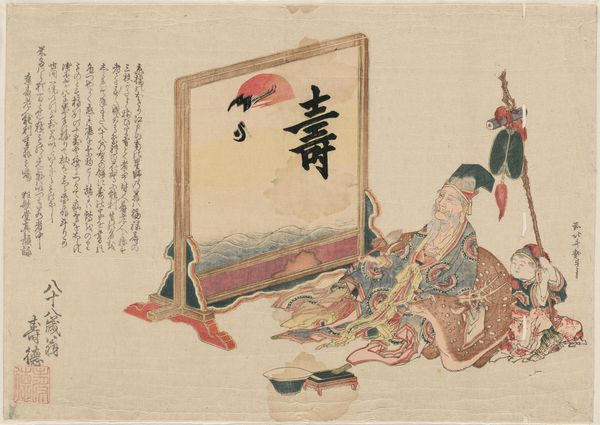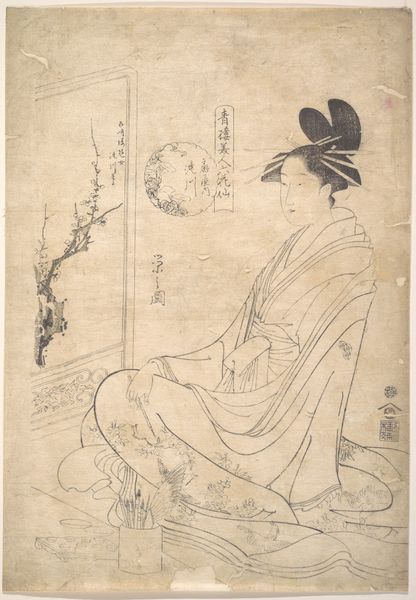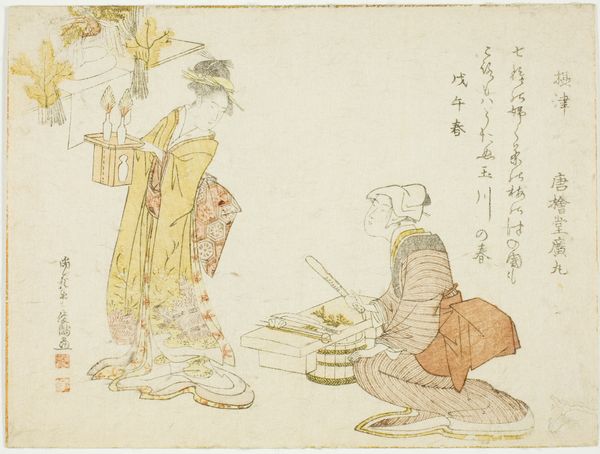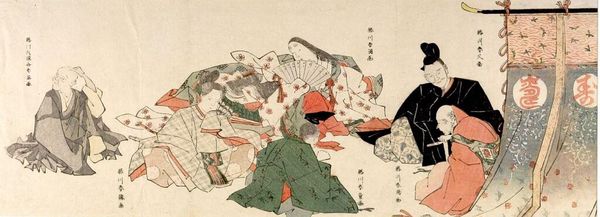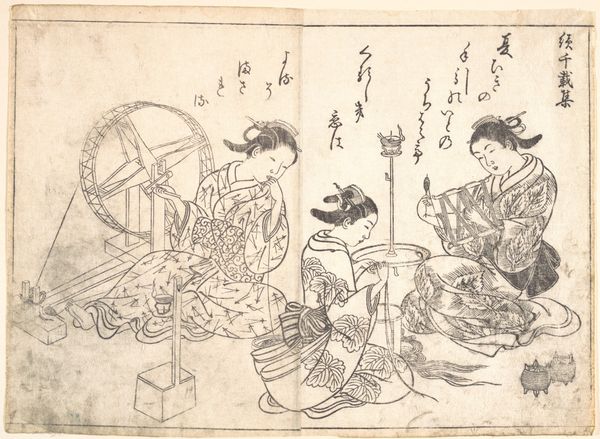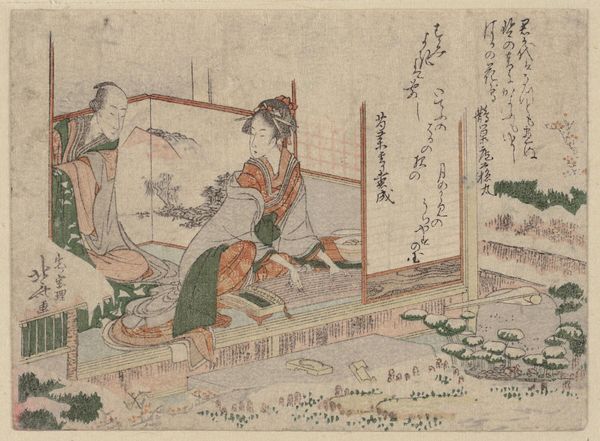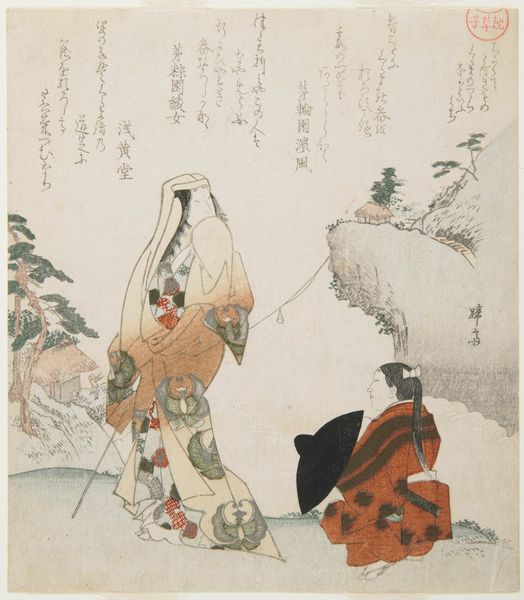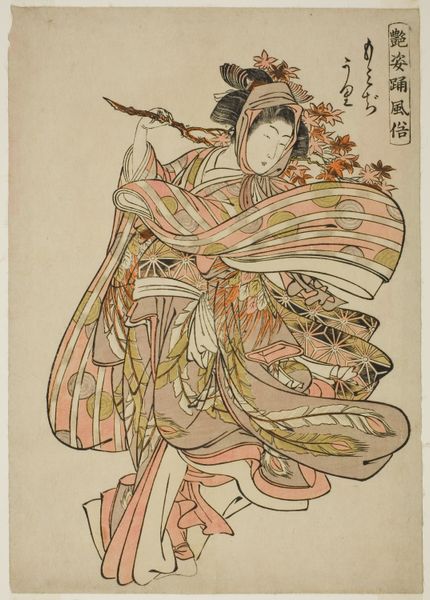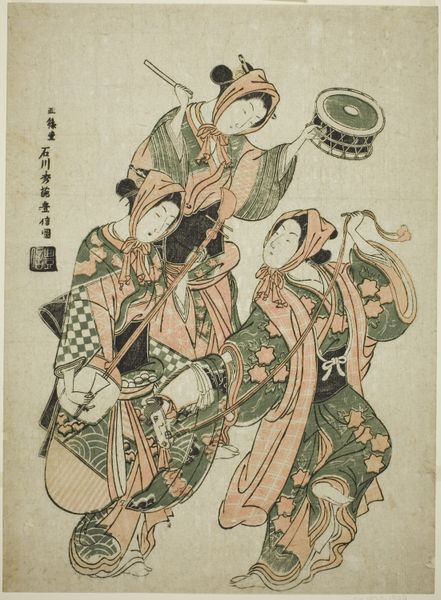
print, ink, woodblock-print
#
narrative-art
# print
#
asian-art
#
landscape
#
ukiyo-e
#
figuration
#
ink
#
woodblock-print
#
orientalism
Dimensions: 8 1/16 x 10 13/16 in. (20.5 x 27.5 cm) (sheet)
Copyright: Public Domain
Curator: This intriguing print is "Kakinomoto Hitomaro and Tenbai Mountain," created by Katsushika Hokusai in 1816. You can find it on display at the Minneapolis Institute of Art. Editor: The duality is immediately striking—the desolate figure exposed on the left versus the cloistered individual on the right. It's almost claustrophobic, even with the vast sky in the background. Curator: It’s interesting you pick up on that dichotomy. The image is a diptych. On the left, we see Kakinomoto Hitomaro, a famous poet, in a state of apparent distress on Tenbai Mountain. The right panel presents a more formalized scene, almost theatrical in its presentation. Editor: Hokusai’s woodblock technique here is key. The linear quality emphasizes the sharp, angular rocks of the mountain. You can almost feel the wind whipping around the figure—the raw elements. How did the making of prints like this factor into Japanese society? Curator: Ukiyo-e prints, like this one, were instrumental in disseminating visual culture to a broader public. Consider the labor: from the artist's initial design, to the block carver's meticulous work translating that design into a series of woodblocks, each representing a different color, and then the printer who skillfully layered these colors. These prints were affordable art. Editor: So, this piece bridges high art, poetry, and the broader reach of printmaking, connecting to a public through accessible imagery. What's your take on the imagery itself? What are we meant to see here? Curator: Well, the image depicts a transformative experience – the poet's creative struggle manifested in that desolate landscape. In contrast, the other half looks more formalized, perhaps hinting at the end product or legacy of his poetic work. Editor: It gives one pause. The idea of artistic struggle is a popular idea, of course. And it makes you wonder who this art was made for, beyond even the public distribution you mentioned before. Curator: Ultimately, Hokusai provides us not just with a narrative but an examination of the artist's place in culture, produced through highly skilled craft processes. Editor: So we move through the production and impact and think more about how works of art move between creator and the audience to form shared stories of artistic vision and toil.
Comments
No comments
Be the first to comment and join the conversation on the ultimate creative platform.

